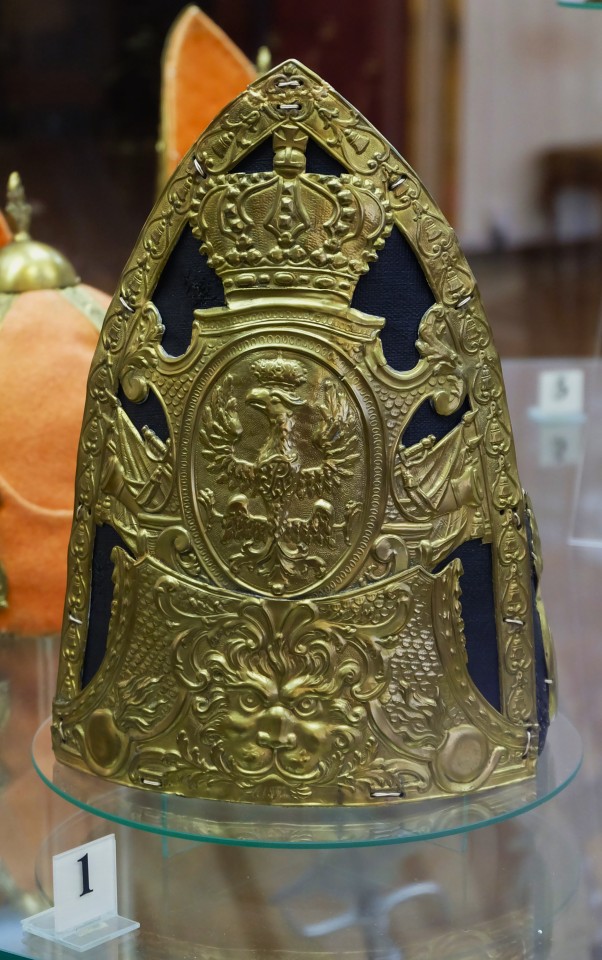#Kingdom of Prussia
Explore tagged Tumblr posts
Text

Winter Scene from the Franco-Prussian War 1870/71 by Christian Sell
#christian sell#art#franco prussian war#franco german war#war of 1870#north german confederation#kingdom of prussia#prussia#prussian#france#french#german#germany#cavalry#winter#landscape#snow#trees#history#europe#european
89 notes
·
View notes
Text

Von Bredow's "Death Ride"
#Karasumi#Kingdom of Prussia#Girls und Panzer#maho nishizumi#Erika (GuP)#Koume akaboshi#Franco-Prussian War
72 notes
·
View notes
Text

Guys, Russian Empire will finally be with his beloved Prussia... well, when I finally digitalize and lore drop.
#country humans#countryhumans#artists on tumblr#my art#art#artwork#traditional drawing#traditional art#countryhumans prussia#countryhumans kingdom of prussia#kingdom of prussia#prussia
22 notes
·
View notes
Text

Great👑
9 notes
·
View notes
Text

Anna Dorothea Therbusch (German, 1721-1782), Self portrait as flora (Circa 1765-1768) x
Anna Dorothea Therbusch (born Anna Dorothea Lisiewski, Polish: Anna Dorota Lisiewska, 23 July 1721 – 9 November 1782) was a prominent Rococo painter born in the Kingdom of Prussia. About 200 of her works survive, and she painted at least eighty-five verified portraits. via Wikipedia Her Father was Georg Lisiewski (1674–1751), a Berlin portrait painter of Polish stock who arrived in Prussia in 1692.
10 notes
·
View notes
Text

Mitre Cap of Jung Schwerin Fusilier Regiment No. 32 from the Kingdom of Prussia dated to 1740 on display at the Heeresgeschichtliches Museum in Vienna, Austria
Photographs taken by myself 2022
#uniform#military history#art#fashion#kingdom of prussia#german#germany#18th century#hohenzollern#heeresgeschichtliches museum#vienna#barbucomedie
25 notes
·
View notes
Text



Frederick III, Emperor of Germany and King of Prussia. By Alexander Bassano.
#alexander bassano#frederick iii#german emperor#ii reich#haus hohenzollern#königreich preußen#kingdom of prussia#house of hohenzollern#bearded men#preußen#royalty
5 notes
·
View notes
Photo
Duchess Cecilie Auguste Marie of Mecklenburg-Schwerin (20 September 1886 – 6 May 1954) was the last German Crown Princess and Crown Princess of Prussia as the wife of Wilhelm, German Crown Prince, the son of Wilhelm II, German Emperor.
Cecilie was a daughter of Frederick Francis III, Grand Duke of Mecklenburg-Schwerin and Grand Duchess Anastasia Mikhailovna of Russia. She was brought up with simplicity, and her early life was peripatetic, spending summers in Mecklenburg and the rest of the year in Southern France. After the death of her father, she traveled every summer between 1898 and 1904 to her mother's native Russia. On 6 June 1905, she married German Crown Prince Wilhelm. The couple had four sons and two daughters. Cecilie, tall and statuesque, became popular in Germany for her sense of style. However, her husband was a womanizer and the marriage was unhappy.
After the fall of the German monarchy, at the end of World War I, Cecilie and her husband lived mostly apart. During the Weimar Republic and the Nazi period, Cecilie lived a private life mainly at Cecilienhof Palace in Potsdam. With the advance of the Soviet troops, she left the Cecilienhof in February 1945, never to return. She settled in Bad Kissingen until 1952 when she moved to an apartment in the Frauenkopf district of Stuttgart. In 1952, she published a book of memoirs. She died two years later.

Crown Princess Cecilie of Prussia, 1908 by Caspar Ritter (German-born Swiss, 1861–1923)
#history#art#clothing#german empire#kingdom of prussia#grand duchy of mecklenburg-schwerin#germany#mecklenburg-vorpommern#brandenburg#potsdam#cecilienhof#ww1#german revolution of 1918-1919#duchess cecilie of mecklenburg-schwerin#wilhelm german crown prince#wilhelm ii#frederick francis iii#grand duchess anastasia mikhailovna#caspar ritter#house of mecklenburg
481 notes
·
View notes
Text

Mein schiesse son Alfred who shoots me with guns
#hws america#aph america#hws prussia#aph prussia#wish people talked more about Alfred and Gilbert’s relationship#especially in the context of the relationship between the kingdom of Prussia and the United States they have a bit of history together
512 notes
·
View notes
Text

TIARA ALERT: Princess Antonia, Duchess of Wellington, wore a diamond floral tiara for the State Opening of Parliament at the Palace of Westminster in London on 17 July 2024.
#Tiara Alert#Duchess of Wellington#Princess Antonia#United Kingdom#British Nobility#tiara#diamond#floral tiara#diadem#royal jewels#Prussia#Prussian Royal Family
209 notes
·
View notes
Text

happy b-day gilbert! we still miss you everyday, fly high homie 🕊️
#hetalia#hws america#hws prussia#alfred you asshole the tshirt is gonna scare the HOES#don’t worry he got him back#gil got al a replica of the White House made out of matches on august 24 for being a shitass#dates are going by the founding of the kingdom of Prussia to the free state of Prussia#just so the dates seem realistic to our timeline LOL#kikidoodlez
245 notes
·
View notes
Text

General Gneisenau at the Battle of Leipzig by Richard Caton Woodville Jr.
#richard caton woodville jr#art#august neidhardt von gneisenau#battle of leipzig#napoleonic wars#prussian#prussia#german#germany#history#europe#european#battle of the nations#saxony#wars of liberation#war of the sixth coalition#napoleonic#kingdom of prussia#horseback#german campaign#general gneisenau#military#horse
99 notes
·
View notes
Text


4th Garde-Grenadier-Regiment Königin Augusta, 1870
35 notes
·
View notes
Text
Kingdom of Prussia/Prussia

Facts about him:
Gender: Male
Height: 5'9"
Mother: Teutonic Order
Never knew her but doesn't care
He hates her anyways
Father: Holy Roman Empire
Loves him so much
Was taught how to fight by him
Took care of him by brushing his wings, washing his clothes, fixing some mistakes in his plans, etc
Is innocent just like him
Somewhat scared of him when he gets pissed off
Brother: Austrian Empire
They aren't really close
Doesn't really know him on a personal level
A.E was separated from HRE and Prussia when Teutonic decided to just leave them behind
Is pretty neutral with Austrian's husband, Kingdom of Hungary
Didn't like the fact that he called HRE an "Old man who should've been dead ages and is long overdue", to which he beat the living shit out of him
Boyfriend: Russian Empire
They met when they were young children and were really close friends
Later they became allies
And then Russian Empire got the balls to ask him to be his boyfriend
Being a dense man, he never knew that Russian Empire was courting him all these years. He thought he was being nice-
Absolutely adores him
Got to experience what it feels like to fly because Russian Empire just
R.E's "Birdie"
Absolutely heartbroken when R.E died, an swore he will never love anyone else for as long as he lives
Every night, he would always call out to him and cry for him in his sleep
Son: German Empire/Reichtangle
Was shocked when his son brought someone (Austria-Hungary) to his castle
Even more shocked that his son had a boyfriend, but he approved it all the way
Cried during his wedding
He loves him so much that he still babies him even though he's a married adult man
Relation: Tsardom of Russia
Hated the fact that he was so abusive to Russian Empire
Eventually he starts to respect him after knowing what he went through and the great lengths he took just to protect his son
Mortified when Tsardom gets pissed off and goes full eagle
Is neutral towards him
Death: Natural causes
He was reunited with his beloved at last
German Empire was deeply saddened, and despite having hatred towards Russian Empire, he was happy his father was in a better place
No matter how hard he tries, he can't cook shit
Always wished he could fly
His hair is short, so that's why he treats the fake hair on his helmet as if it were real
Pretty insecure about his appearance
Gets EXTREMEYLY jealous that many countries, including French Empire, are hitting on HIS man
Oreo... I mean look at him-
He finally understands why Russian Empire loves peaches so much👀
As said earlier, he's really innocent like Holy Roman Empire. He doesn't really understand the signs of love or when someone's hitting on him
He's really naïve and slow on picking up certain things (Be nice to him :( )
Unlike Russian Empire, he doesn't speak formally and is really laid-back despite having an entire kingdom
#country humans#countryhumans#artists on tumblr#my art#art#artwork#digital art#digital drawing#countryhumans kingdom of prussia#kingdom of prussia#countryhumans prussia#prussia
11 notes
·
View notes
Text

𝓐𝓵𝓵𝓮𝓼 𝓖𝓾𝓽𝓮 𝔃𝓾𝓶 𝓖𝓮𝓫𝓾𝓻𝓽𝓼𝓽𝓪𝓰!👸
#歴史創作#my art#napoleonic#19th century#luise von mecklenburg strelitz#happy birthday#Kingdom of Prussia
4 notes
·
View notes
Text

Candid photograph of Princess Henry of Prussia with her nephew Tsesarevich Alexei of Russia, Peterhof, August 1913.
#irene of hesse#irene of hesse and by rhine#louis iv#princess alice#princess alice of the united kingdom#queen victoria#victoria#prince albert#albert#victorian#victorian era#germany#hesse#rhine#prussia#princess#royal#royalty#history#portrait#photo#alexei of russia
41 notes
·
View notes